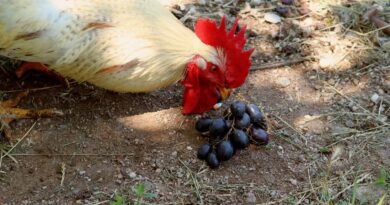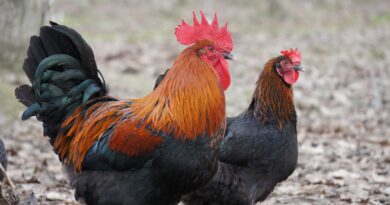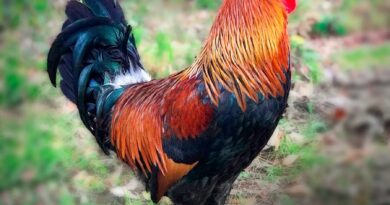Can Chickens Fly? Understanding the Facts About Chicken Flight
Chickens are fascinating creatures that have been domesticated for thousands of years, providing humans with eggs, meat, and even companionship. Despite their ubiquitous presence, many people are curious about a seemingly simple question: Can chickens fly? The answer, while straightforward, leads to a deeper exploration of their anatomy, behavior, and history. This article will uncover the truth about chicken flight, diving into the science, myths, and unique traits that define these remarkable birds.
The Anatomy of a Chicken: Built for Ground, Not Sky
To understand whether chickens can fly, it’s essential to look at their anatomy. Chickens are birds, and like all birds, they possess wings and feathers designed for flight. However, the structural makeup of a chicken’s body significantly limits their aerial abilities.
Wing Structure
Chickens have relatively short wings compared to their body size. While their wings are covered in feathers capable of creating lift, their length and muscle structure are insufficient for sustained flight. Unlike birds of prey or migratory species, chickens lack the elongated wingspan necessary to glide through the air for extended periods.
Muscle Development
Birds that excel at flying, such as hawks and swallows, have powerful breast muscles (pectoralis major) that drive their wingbeats. Chickens, however, have less developed flight muscles. Their pectoral muscles are adapted more for balance and short bursts of movement than for the continuous effort required to stay airborne.
Body Weight and Balance
Chickens are relatively heavy birds for their size. Domesticated breeds, in particular, have been bred for meat and egg production, resulting in larger, stockier bodies. This increased weight, combined with their center of gravity, makes sustained flight virtually impossible.
The Short Bursts of Flight Chickens Can Achieve
While chickens are not built for long-distance flight, they are capable of short bursts of flight. These brief flights usually occur when a chicken feels threatened, needs to escape a predator, or attempts to reach a higher perch.
Escape Mechanism
Chickens often use their limited flying ability as a defense mechanism. If a predator approaches, a chicken may take off briefly to gain distance or elevation, such as flying up into a tree or over a fence. These short flights rarely exceed a few seconds or cover distances longer than 10-15 feet.
Roosting Behavior
Chickens naturally roost in elevated places to stay safe from ground-dwelling predators. In the wild, junglefowl—the ancestors of modern chickens—roost in trees. Domesticated chickens retain this instinct and will often “fly” up to perches, beams, or branches for safety.
The Role of Domestication in Chicken Flight Abilities
The chicken’s limited flying ability is a direct result of domestication. Over thousands of years, humans have selectively bred chickens for specific traits, such as larger size, increased egg production, and docility. These breeding practices have significantly impacted their physical capabilities.
Junglefowl: The Flying Ancestors
The red junglefowl (Gallus gallus), native to Southeast Asia, is the wild ancestor of modern chickens. Unlike their domesticated counterparts, junglefowl are more agile and capable of stronger flight. They often use their flying ability to evade predators or navigate dense forests.
Breeding for Productivity
Modern chickens have been bred for two primary purposes: egg production and meat yield. Layers, or egg-laying breeds, are leaner and more active, allowing for slightly better flight capabilities. Broilers, or meat breeds, are heavier and more sedentary, making flight almost impossible. These adaptations are intentional, prioritizing human needs over the birds’ natural behaviors.
Why Some Chickens Fly Better Than Others
Not all chickens are created equal when it comes to flight. Breed, age, and individual health all play a role in determining a chicken’s flying ability.
Lightweight Breeds
Breeds like Leghorns and Bantams are lighter and more agile, enabling them to achieve better flight. These chickens are often more active and curious, making them more likely to use their wings to explore their surroundings.
Heavyweight Breeds
Heavier breeds, such as Brahmas and Orpingtons, are less capable of flight due to their size and weight. These birds are primarily ground-dwellers, relying on their legs for mobility.
Age and Health
Young, healthy chickens are generally better fliers than older or less healthy individuals. As chickens age, their muscles weaken, and their mobility decreases, further limiting their ability to take flight.
The Myths and Misconceptions About Chicken Flight
The idea that chickens cannot fly at all is a common misconception. This belief likely stems from observing domesticated chickens in farm environments, where they rarely need to fly.
The “Flightless” Label
Chickens are often lumped together with truly flightless birds like ostriches and penguins. However, chickens do not belong in this category. Unlike these species, chickens have wings capable of limited flight, even if their abilities are modest.
Chickens and Air Travel
Stories and jokes about chickens not being able to “fly” in the context of air travel have added to the myth. These cultural references often exaggerate the chicken’s terrestrial nature for comedic effect.
Practical Implications of Chicken Flight
Understanding the flight capabilities of chickens is important for farmers, pet owners, and hobbyists. Whether you’re keeping chickens for eggs, meat, or companionship, their limited flying ability has practical implications.
Fencing and Enclosures
Despite their limited flight, chickens are capable of clearing low fences. Owners should ensure that enclosures are adequately tall to prevent escapes, especially for lighter breeds that are more agile.
Predator Protection
Chickens may attempt to fly to escape predators, but they are often vulnerable during these moments. Providing secure, elevated roosting areas can help keep them safe from ground-based threats.
Space Requirements
Chickens that have room to roam and explore are less likely to attempt flights. Ensuring ample space within a coop or run can reduce the likelihood of injuries from failed flight attempts.
The Evolutionary Trade-Off: Flight vs. Survival
The chicken’s limited flight ability highlights an evolutionary trade-off. By prioritizing ground-based behaviors, such as foraging and nesting, chickens have sacrificed the ability to sustain flight. This trade-off has been further amplified by human intervention through domestication.
Benefits of Ground-Based Living
Chickens are highly efficient ground foragers, capable of finding food in a variety of environments. Their strong legs and sharp claws allow them to dig, scratch, and navigate their surroundings effectively.
The Cost of Limited Flight
While ground-based living offers many advantages, it comes with risks. Flight would provide an added layer of protection against predators and environmental threats, but chickens compensate with other survival strategies, such as group living and vigilance.
Comparing Chickens to Other Birds
When discussing chicken flight, it can be helpful to compare their abilities to those of other birds.
True Flightless Birds
Species like ostriches and emus have completely lost the ability to fly due to evolutionary changes.
These birds have adapted to terrestrial life with powerful legs and unique survival strategies.
Strong Flyers
In contrast, birds like eagles and swallows are equipped for sustained flight, with specialized wing shapes, strong muscles, and lightweight bodies.
Game Birds
Chickens share some similarities with other ground-dwelling birds, such as pheasants and quails. These species also exhibit limited flight, often using it for short bursts to escape predators.
Conclusion: Can Chickens Fly?
So, can chickens fly? The answer is both yes and no. Chickens are not flightless birds, but their ability to fly is limited to short, low bursts. This unique trait reflects their anatomy, evolutionary history, and the influence of domestication. While they may never soar through the skies like eagles, chickens remain fascinating creatures with a rich history and remarkable adaptability.
Understanding the facts about chicken flight not only satisfies curiosity but also provides valuable insights for anyone who keeps or studies these incredible birds. Whether you’re marveling at their brief flights or appreciating their ground-based skills, chickens are a testament to the diversity and complexity of the animal kingdom




